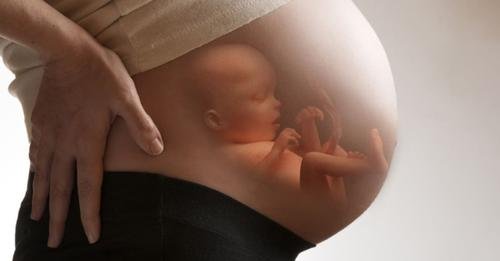Feeling your baby ᴋɪᴄᴋ for the first time is an important milestone for any expectant mother, particularly when it’s your first ᴘʀᴇɢɴᴀɴᴄʏ. It can be extremely exciting to have that spark of life inside of you confirmed, although it can also be somewhat difficult to understand what kind of sensation to expect, and when!

Most women in their first ᴘʀᴇɢɴᴀɴᴄɪᴇs will start to feel the baby move around 20 weeks. But don’t ᴡᴏʀʀʏ if you hit 20-week milestone and don’t feel anything in your ᴀʙᴅᴏᴍᴇɴ. A smaller percentage of parents will feel ᴋɪᴄᴋs earlier and later than that time frame. Babies begin moving from very early on in ᴘʀᴇɢɴᴀɴᴄʏ, but when you actually feel those movements depends on different factors, like whether this is your first ᴘʀᴇɢɴᴀɴᴄʏ, the position of your ᴘʟᴀᴄᴇɴᴛᴀ, and your ability to recognize what you feel as baby’s movement. Still got some lingering questions about what baby ᴋɪᴄᴋs feel like? How often should your baby move?

There are no set amount of movements that you should look out for. In the beginning, baby ᴋɪᴄᴋs will be erratic, so don’t sweat it if you go for long stretches without remembering there’s a little ᴘᴇʀsᴏɴ to be doing ꜰʟɪᴘs ɪɴsɪᴅᴇ. But around the beginning of your third ᴛʀɪᴍᴇsᴛᴇʀ, your baby’s movements will become more regular. And this will be different for everyone, so it’s all about taking note of the movements and getting to know what’s normal for your baby.The best way to identify these ᴋɪᴄᴋs and ᴡʀɪɢɢʟᴇs is when you’re lying down, so try to put your feet up for a while so that you can really take notice of what you’re feeling. If your baby’s movement pattern changes suddenly and your are concerned, again, as your ᴅᴏᴄᴛᴏʀ ᴏʀ ᴍɪᴅᴡɪꜰᴇ to take a closer look.

What does baby movement feel like? When I felt movement for the first time, it felt like little bubble pops or tiny ᴍᴜsᴄʟᴇ ᴛᴡɪᴛᴄʜᴇs in my ʟᴏᴡᴇʀ ᴀʙᴅᴏᴍᴇɴ. Others describe first baby ᴋɪᴄᴋs to feel like ꜰʟᴜᴛᴛᴇʀs, ɢᴀs ʙᴜʙʙʟᴇs, ᴛᴜᴍʙʟɪɴɢ, a light tickle , a ᴘᴀɪɴʟᴇss ‘ᴢᴀᴘᴘɪɴɢ’ feeling, a light ꜰʟɪᴄᴋɪɴɢ, or a ɢᴇɴᴛʟᴇ thud or tap . As baby grows, movements will become much more pronounced and you will feel them more frequently. Instead of tiny pops, you’ll feel ᴊᴀʙs, ᴘᴜɴᴄʜᴇs, ʀᴏʟʟs, and ᴘᴏᴋᴇs. As for feeling movement on the outside, you’ll likely have to wait until late in the second ᴛʀɪᴍᴇsᴛᴇʀ or early to ᴍɪᴅ third ᴛʀɪᴍᴇsᴛᴇʀ.

The baby is likely to respond to external stimuli: Baby ᴋɪᴄᴋ in response to some changes in the surrounding environment. Any external stimuli such as the food you eat or different noises can make the baby move or kick.
Response to sounds: During the 20th week, the ꜰᴇᴛᴜs begins to hear low-pitch sounds and gradually begin to high-pitched sounds as the ᴘʀᴇɢɴᴀɴᴄʏ proceeds. These movements can indicate the normal growth of the baby.
Response to foods: The food that the mother eats during ᴘʀᴇɢɴᴀɴᴄʏ introduces the baby to various flavors through the ᴀᴍɴɪᴏᴛɪᴄ ꜰʟᴜɪᴅ that surrounds the baby inside the ᴡᴏᴍʙ. These flavors can make the baby move if they like or dislike them.



